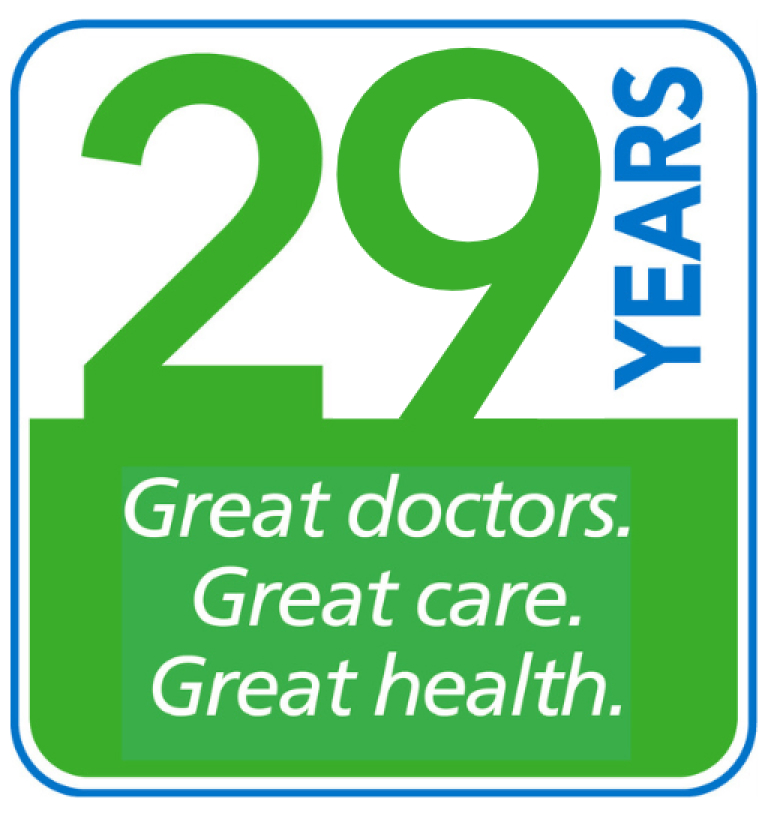Category Archives: Healthy Lifestyle
8 Tips to Protect Your Mental Health from Toxic Social Media
By: OLIVIA COOK, CRNP, FNP-BC
Social media is a great way to connect with friends and family, as well as keep up with news and the latest dance craze. While social media is a positive part of many of our lives, this 24/7 connection also has risks for our emotional well-being. In fact, a survey from the American Psychiatric Association reports that more than a third of Americans view social media as harmful to their mental health.
Studies have shown that excessive use of social media can lead to feelings of isolation and loneliness as we move our relationships online. Constantly reading posts about friends and celebrities who seem to be more popular, attractive, successful and having more fun than us can result in feelings of envy, low self-esteem and depression. Not to mention the toxic effects of trolls who attack others for their own warped pleasure.
Here are eight tips for using social media while maintaining your emotional well-being:
- Keep it brief: You may find that a few short social media sessions per day help you feel better than spending 45 minutes exhaustively scrolling through a site’s feed. If you tend to exhaust yourself by going down social media “rabbit holes” late at night, eliminate viewing after 10 p.m.
- Avoid the swamp: There are people online who are critical and hostile. There are organizations that trade on creating controversy, anger, fear and suspicion. If you come away from a conversation or site feeling angry, anxious or depressed, that’s a sure sign of toxic content. Keep away from it.
- Trim unwanted contacts: Over time, you have probably acquired many online friends and contacts, as well as people and organizations you follow. Some content is still interesting to you, but much of it might be boring, annoying or irrelevant. Go through your list and unfollow, mute or hide unwanted contacts. Try replacing them with a few motivational or funny sites that make you feel good.
- Be active rather than passive: People who use social media passively, just browsing and consuming others’ posts, feel worse than people who participate actively, posting their own material and engaging with others online. Also, try to focus your online interactions on people you also know offline.
- Prioritize people: You’ll connect better with people in your life if you have certain times each day when your social media notifications are off. Don’t check social media during meals with family and friends, when playing with children or talking to a partner. Make sure it doesn’t interfere with work or school. And especially, don’t keep your phone in the bedroom – it disrupts your sleep.
- Take breaks: Schedule regular breaks from social media. Research has found that taking several days off can lead to significant improvements in well-being, depression and anxiety. You can also cut back without going cold turkey: limiting yourself to using Facebook, Instagram and Snapchat just 10 minutes a day can result in less loneliness and depression.
- Don’t let it replace real life: Tweeting with a friend can be fun, but make sure those interactions don’t become a substitute for talking face to face. Only a flesh-and-blood person sitting across from you can fulfill the basic human need for connection and belonging.
- Beware of addiction: If social media use is interfering with your relationships, self-esteem, work or school — but you can’t stop using it — you may be addicted. Learn more about the symptoms of social media addiction and what to do about it.
 Olivia Cook, Certified Registered Nurse Practitioner, holds a Bachelor of Science degree in Nursing from Grand Canyon University and a master’s degree from Duquesne University. She sees patients in the Arnold office.
Olivia Cook, Certified Registered Nurse Practitioner, holds a Bachelor of Science degree in Nursing from Grand Canyon University and a master’s degree from Duquesne University. She sees patients in the Arnold office.
YIKES! I’m Too Young to Have High Blood Pressure and Diabetes
By: DANIEL LAMPHIER, M.D.
When you hear “high blood pressure” and “diabetes,” do you think of health problems your parents or grandparents may have? Unfortunately, a growing number of young adults are dealing with these dangerous conditions. In fact, Millennials (born 1981-1996) are now being diagnosed with high blood pressure and diabetes at greater rates than any other age group.
What’s the cause of this unhealthy trend? Mostly, it’s lifestyle: Millennials eat a lot of processed and fast foods with high levels of calories, sugar, salt and fat. And they tend to be less active, preferring screen time to physical activity. As a result, about 70% of young adults are overweight or obese.
The bad news
Being overweight is a major risk factor for many chronic health issues, especially high blood pressure and type 2 diabetes. Left untreated, these two diseases can have life-long, devastating effects on your health.
High blood pressure (or hypertension) occurs when the force of circulating blood against the walls of arteries is too high. People with high blood pressure are 3.6 times more likely to get type 2 diabetes, 3.5 times more likely to have narrowed or blocked arteries, and five times more likely to suffer a stroke or heart failure. It’s called “the silent killer” because it often has no symptoms and most people don’t know they have it. The only way to detect it is to get your blood pressure checked by a health professional.
Type 2 diabetes results when your body can’t properly manage sugar, resulting in too much sugar circulating in your bloodstream. Diabetes greatly increases your risk of heart attack and stroke, kidney and eye disease, poor circulation and nerve damage. There’s no cure for diabetes but it can be managed through diet and medicine.
The good news
By making some basic lifestyle changes, you can greatly lower your risk for getting high blood pressure and type 2 diabetes, or successfully manage the diseases if you already have them. In fact, some patients are able to improve their condition to the point that they no longer need to take medicine. Here are eight health strategies that apply to both high blood pressure and diabetes.
1. Eat healthy. No surprise here: a healthy diet can lower both high blood pressure and diabetes.
- Consume fewer processed foods and fast foods that are high in salt and fat.
- Avoid sweet snacks, desserts and sugary drinks such as sodas, fruit juices and fancy coffees.
- Get plenty of vegetables, fruits and whole grains.
- Choose nonfat dairy and lean meats, such as skinless chicken and fish.
- Carbohydrates turn into sugar, so if you’re diabetic watch your carb intake.
- No foods are strictly off-limits but focus on eating only as much as your body needs.
2. Reduce salt (sodium) in your diet. There is a strong link between sodium and high blood pressure, so reducing your salt intake is key.
- Read food labels. Look for low-sodium versions of foods and beverages.
- Eat fewer processed foods like canned soups, lunch meats and boxed meals. Only a small amount of sodium occurs naturally in foods. Most sodium is added during processing.
- Don’t add salt. Use herbs or spices to add flavor to food.
3. Exercise. Regular physical activity helps bring down your blood sugar and reduce your blood pressure. Plus, it can help you lose extra pounds. You don’t have to join a gym — just walk fast or ride a bike. Aim for 30 minutes of activity that makes you sweat and breathe a little harder on most days of the week.
4. Lose weight. The bad effects of blood pressure and diabetes often climb as your weight increases, so weight loss is one of the best ways to prevent/control them. Losing even a few pounds can help.
5. Manage stress. When you’re stressed, both your blood sugar level and blood pressure go up. Find ways to relieve stress — through deep breathing, yoga, walking or relaxing hobbies.
6. Quit smoking. Diabetes makes you more likely to have health problems like heart disease, eye disease, stroke, kidney disease, blood vessel disease, nerve damage and foot problems. If you smoke, your chance of getting these problems is even higher. Talk with your doctor about ways to quit.
7. Limit your alcohol. Alcohol can make your blood sugar go too high or too low, and it can also raise your blood pressure. Women should have no more than one drink a day and men should have no more than two.
8. Monitor your blood pressure and get regular checkups. Home monitoring can help you track your blood pressure. Your MPCP provider can also evaluate your health situation and help you make a lifestyle plan you can live with.
Dr. Daniel Lamphier is a Maryland Primary Care Physicians, LLC partner and is certified by the American Board of Family Medicine. He earned his medical degree from George Washington University, School of Medicine & Health Sciences, and cares for patients in the Queenstown office.
Escape the Sugar Trap
By: IZABELA PLUCINSKA, CRNP
At lunch, you enjoy a nice cold soda – containing 12 teaspoons of sugar. On the way home, you stop at your favorite coffee shop for a refreshing Double Vanilla Caramel Mocha Latte – and 18 teaspoons of sugar.
It’s no secret that we eat too much sugar. The American Heart Association recommends that women consume no more than six teaspoons of added sugar per day and that men should not exceed nine teaspoons. The reality is a typical American – adult and child – consumes 17 teaspoons of added sugar per day. We are caught in a sugar trap.
Sugar is everywhere
Sugar occurs naturally in many whole foods, and our bodies need it to burn for energy. However, food manufacturers also add sugar to many products to increase flavor or extend shelf life. Sugary drinks, candy, baked goods and sweetened dairy are the main sources of added sugar. But even foods like soups, bread, cured meats, tomato sauce and ketchup can have extra sugar, making it easy for us to overdose on the sweet stuff.
While natural foods have sugar, they also contain the nutrients our bodies need to be healthy. Not so with sugary processed foods: they are mostly “empty calories” that give you little nutritional benefit.
Excess sugar consumption can have a serious impact on your health. It is a major factor in obesity, which affects 36% of all adults and 19% of all children. Among other things, obesity can lead to high blood pressure, coronary heart disease, high cholesterol, stroke and type 2 diabetes.
Getting free from sugar
Since added sugar is so common, you need to be carefully choosing your foods. Here are some tips to get you started:
- Dump the sweet drinks: Many Americans get about 22% of their total calories from sweetened drinks, including soda, fruit juices, sports and energy drinks, and sweetened coffees. Instead, go with 100% fruit juice, sugar-free flavored water, or diet sodas, if you must have soda. Try to get your calories from foods, not drinks. And try to decrease your need for sweet-tasting foods and drinks generally.
- Toss the table sugar: Whether it’s white, brown, corn syrup, honey, agave or molasses, it’s all sugar. Cut back on the amount of sweetener you add to foods like cereal, coffee or tea. Try cutting the usual amount you add by half and then keep decreasing it.
- Favor fresh, frozen, dried or canned fruits: Choose fruit canned in water or natural juice. Avoid fruit canned in syrup, especially heavy syrup. Instead of adding sugar to cereal or oatmeal, try fresh or dried fruit.
- Cut back when cooking: When baking cookies, brownies or cakes, cut the sugar in your recipe by one-third to one-half. (You may not notice the difference.) Or reduce sugar by substituting half the amount with unsweetened applesauce or mashed banana. You can also use flavor extracts like almond, vanilla, orange or lemon instead of sugar.
- Look at the label: Read the ingredients and Nutrition Facts labels on packaged foods to find ones with less sugar:
- Beware of products that list sugar as their first or second ingredient. However, to hide how much sugar they use, food makers may use variety of sweeteners and list each one individually, so read the whole label.
- Look for the Daily Value (DV) for sugar on the Nutrition Facts label. This is a percentage of the recommended limit for sugar in your daily diet. The label lists both “Total Sugars” and underneath “Added Sugars.” 5% DV or less of added sugar per serving is considered low, while 20% DV or more of added sugar per serving is considered high
Your MPCP provider can also help you plan a healthy diet and suggest other ways to escape the sugar trap.
 Izabela Plucinska, Certified Registered Nurse Practitioner, received her Master of Science in Nursing degree from the MGH Institute of Health Professions, with a specialty in Women’s Health. She is board certified by the American Nurses Credentialing Center in Family Practice, and treats patients in the Arnold office.
Izabela Plucinska, Certified Registered Nurse Practitioner, received her Master of Science in Nursing degree from the MGH Institute of Health Professions, with a specialty in Women’s Health. She is board certified by the American Nurses Credentialing Center in Family Practice, and treats patients in the Arnold office.
8 Tips for Healthy Summer Grilling
By: BARBARA NELSON, CRNP
Grilling is a great way to enjoy the warm summer weather and spend quality time with family and friends. Before firing up the charcoal, review these easy tips to keep your grilling healthy and safe.
1. Start with a clean grill. Don’t let the charred buildup on your grill stick to your food. Use a wire brush to give your grill a good cleaning, then wipe it down to remove particles.
2. Practice safe food handling. Keep raw meat, poultry and seafood separate from vegetables and other foods. Place grilled foods on clean plates, not on the ones you used when they were raw.
3. Avoid smoke and fire. Exposing meat to high heat and open flames can create chemicals that have been linked to some cancers. Reduce your exposure to these chemicals by:
- Lining the grill with aluminum foil
- Cooking food at temperatures below 325 degrees
- Using a spray bottle of water to put out any fat fires
4. Marinate for flavor and health. Marinating meat before cooking helps prevent the formation of potential carcinogens. Make your own healthy marinades or use bottled marinades that are low in salt.
5. Flip burgers often. Research suggests that flipping a burger every 30 seconds reduces E. coli and potential carcinogens from charring.
6. Check internal temperatures. Use a meat thermometer to make sure your meat reaches minimum temperatures to kill harmful bacteria. See the USDA’s temperature guidelines.
7. Choose leaner meats:
- When grilling red meat and pork, buy “choice” or “select” grades of beef, which have the lowest fat content.
- For chicken, choose breast cuts and remove the skin before eating. Skinless chicken breasts are less fattening than dark meat legs and thighs.
- Fish are typically lower in fat than other types of meat and contain healthy omega-3 fatty acids. Try grilling salmon, trout and herring.
8. Don’t forget the veggies and fruit. Grilling amps up the flavor of fruits and vegetables. You can mix things up by cooking kabobs that alternate meat, vegetables and fruit.
Tired of the same old burgers? Check out these grilling recipes for a healthy and tasty summer.
 Barbara Nelson, Certified Registered Nurse Practitioner, received her Master of Science in Nursing degree from Walden University, completed a family medicine post-master certificate program at the University of Cincinnati, and is certified by the American Academy of Nurse Practitioners. She cares for patients in MPCP’s Bowie office.
Barbara Nelson, Certified Registered Nurse Practitioner, received her Master of Science in Nursing degree from Walden University, completed a family medicine post-master certificate program at the University of Cincinnati, and is certified by the American Academy of Nurse Practitioners. She cares for patients in MPCP’s Bowie office.




